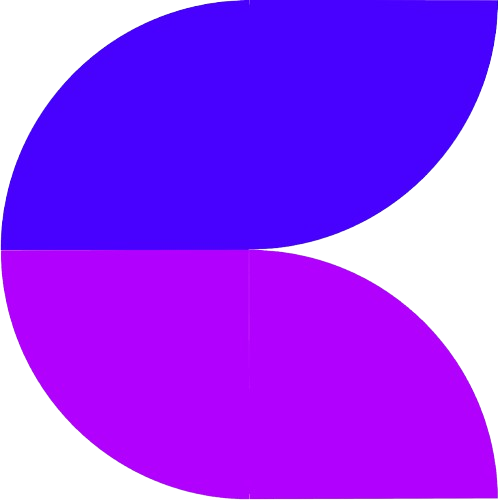Blockchain is one of the most talked-about technologies in recent years, but it can also be difficult to explain—especially to your mom. After all, she probably hasn’t heard of blockchain or cryptocurrencies and may not even understand the basic concepts. So how do you explain it? Well, that’s what this article is all about.
We’ll break down the basics of blockchain technology and discuss how you can use simple analogies to explain it to your mom in a way that she will understand.
What is blockchain?
A blockchain is a digital ledger of all cryptocurrency transactions. It is constantly growing as “completed” blocks are added to it with a new set of recordings. Each block contains a cryptographic hash of the previous block, a timestamp, and transaction data. Bitcoin nodes use the block chain to differentiate legitimate Bitcoin transactions from attempts to re-spend coins that have already been spent elsewhere.
In simple terms, blockchain is a database that is used to store data in a secure and tamper-proof way. The data stored in a blockchain can be anything from financial transactions to voting records. Once data has been entered into the blockchain, it cannot be changed or deleted. This makes blockchain an ideal platform for storing sensitive information.
The term “blockchain” was first used in 2008 by Satoshi Nakamoto, the creator of Bitcoin. Nakamoto designed the Bitcoin blockchain as a way to store transaction information in a secure and tamper-proof manner. Since then, blockchain technology has been adopted by many other organizations and industries beyond just cryptocurrencies.
How does blockchain work?
A blockchain is a digital ledger of all cryptocurrency transactions. It is constantly growing as “completed” blocks are added to it with a new set of recordings. Each block contains a cryptographic hash of the previous block, a timestamp, and transaction data. Bitcoin nodes use the block chain to differentiate legitimate Bitcoin transactions from attempts to re-spend coins that have already been spent elsewhere.
The integrity and chronological order of the blockchain is enforced with cryptography. For example, changing a single letter in a bitcoin block header would result in a completely different hash, and thus a different block altogether. Because each block references the hash of the previous block, it becomes impossible to modify transaction data retrospectively without changing the entire chain back to the genesis block.
What are the benefits of blockchain?
Assuming you would like a detailed content section discussing the benefits of blockchain:
The first and most obvious benefit of blockchain is that it allows for decentralization. With blockchain, there is no need for a central authority or middleman to facilitate transactions. This can be helpful in situations where central authorities are corrupt or unreliable.
Another benefit of blockchain is that it is immutable. Once data has been entered into the blockchain, it cannot be changed or tampered with. This makes blockchain an ideal platform for storing sensitive data or for handling financial transactions.
Finally, blockchain is transparent. All data stored on the blockchain is visible to everyone on the network. This transparency can help build trust between parties and can also help reduce fraudulent activity.
What are some real-world applications of blockchain?
The potential applications of blockchain technology are virtually limitless. Here are just a few of the most promising real-world examples:
1. Supply Chain Management: Blockchain can be used to track the movement of goods and materials throughout the supply chain, from supplier to manufacturer to retailer to consumer. This would increase transparency and efficiency while also reducing fraudulent activity.
2. Identity Management: Blockchain could be used to securely store personal data, such as identity documents, biometrics, and medical records. This would give individuals more control over their own data and could help prevent identity theft.
3. Voting: Blockchain technology could be used to create a secure, tamper-proof voting system. This would allow for fairer and more transparent elections, which would build trust in the political process.
4. Financial Services: Blockchain could revolutionize the financial sector by streamlining processes, reducing costs, and increasing security. For example, blockchain-based “smart contracts” could automate financial transactions between parties.
5. Internet of Things: The “Internet of Things” (IoT) refers to the growing network of physical devices that are connected to the internet (think smart thermostats and wearable fitness trackers). Blockchain could be used to securely manage data from these devices and enable new types of applications
Now you can explain blockchain to your mom!
Now you can explain blockchain to your mom in a way that she will understand! Blockchain is a distributed database that allows for secure, transparent and tamper-proof record keeping. In other words, it is a digital ledger of transactions that everyone can see and verify.
This may sound complicated, but the principle is actually quite simple. Imagine a spreadsheet that is duplicated thousands of times across a network of computers. Then imagine that this network is designed so that anyone can add new information to the spreadsheet but no one can change or delete existing information. That’s what blockchain is!
So why is blockchain such a big deal? Because it has the potential to revolutionize the way we do business. With blockchain, there is no need for central intermediaries like banks or governments to verify or approve transactions – everything is done digitally and securely on the blockchain itself. This not only makes transactions faster and cheaper, but also much more secure.
So there you have it – now you can explain blockchain to your mom!

Hi, I like the news on this site very much.